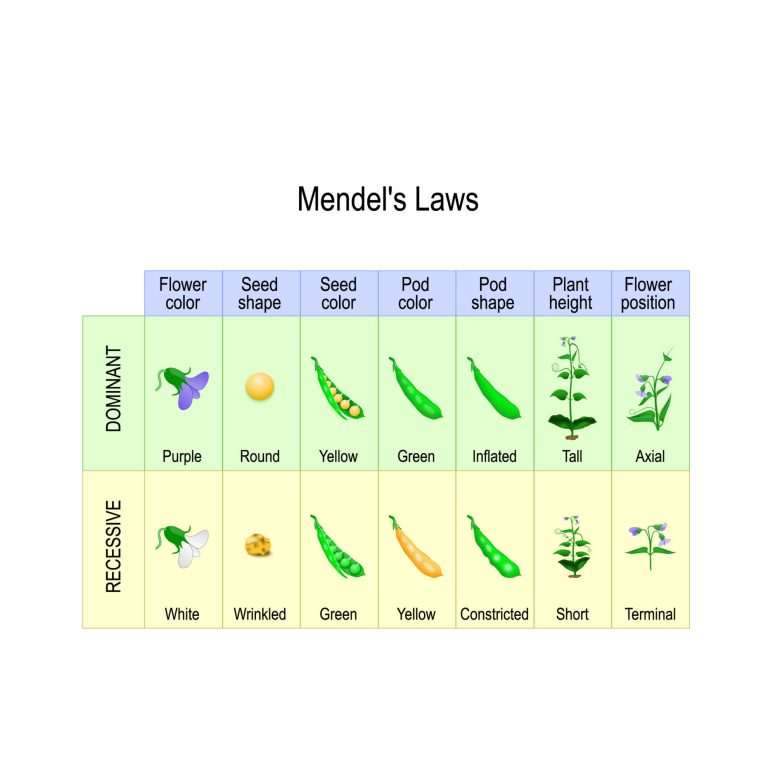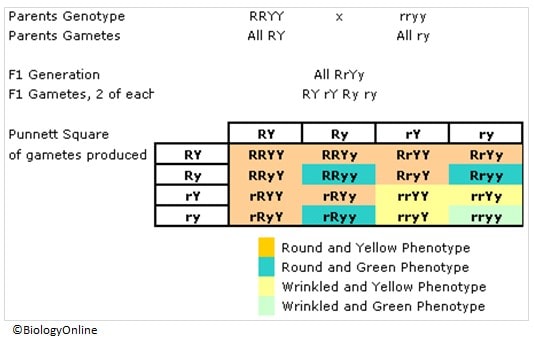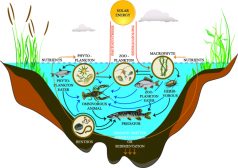Mendel’s Law & Mendelian Genetics

A chart depicting Mendel’s Law of Dominance
Table of Contents
Reviewed by: Mary Anne Clark, Ph.D.
The previous tutorial, Dominance, has described Gregor Mendel’s law of dominance. In this tutorial, you will learn another Mendel’s law — the principle of segregation.
Mendel’s Law of Segregation
“The alleles of a gene exist in pairs but when gametes are formed, the members of each pair pass into different gametes. Thus each gamete contains only one allele of each gene.”
Example of a Cross
The following dihybrid cross involves two true-breeding pea plants, where two factors are looked at, the shape of the seed and the color of the seed.

More examples of dihybrid cross here.
Summary of Mendelian Genetics
The past few pages have elaborated on the work of Gregor Mendel and how his work has paved the way for predicting the characteristics of offspring. However, a degree of randomness is involved, when involving factors such as independent assortment during meiosis and the possibility of genetic mutations (explained in further pages).
In light of this, Mendel’s work allowed us to see that there is a degree of genetic inheritance from parents in offspring though modern biology indicates that more factors come into play to determine the final genotype and phenotype of an organism.
Sticking to the subject of genetics, the next tutorial looks at sex determination via chromosomes X and Y and some of the genetic traits inherited via these two chromosomes.

|
MENDEL’S PRINCIPLES OF HEREDITY – QUIZ
Print this quiz for your students to answer. The first part is a recall of Gregor Mendel’s principles of heredity. The second part is a multiple-choice test about alleles and sex chromosomes. Subjects: Genetics & Evolution |
You will also like...

A Balanced Vitamin Diet – Vitamins A – K
A balanced diet is essential to a healthy organism. Insufficiency or too much of a particular element or compound, such ..

Ecological Research: Measuring & Analysis
This lesson is about the methods used for ecological research, such as quadrat and transect sampling, canopy fogging, an..

Sigmund Freud and Carl Gustav Jung
In this tutorial, the works of Carl Gustav Jung and Sigmund Freud are described. Both of them actively pursued the way h..

The Dinosaurs
Dinosaurs represented a major turn in the evolutionary development of organisms on Earth. The first dinosaurs were presu..

Freshwater Producers and Consumers
Freshwater ecosystem is comprised of four major constituents, namely elements and compounds, plants, consumers, and deco..

Neurology of Illusions
Illusions are the perceptions and sensory data obtained from situations in which human error prevents us from seeing the..
